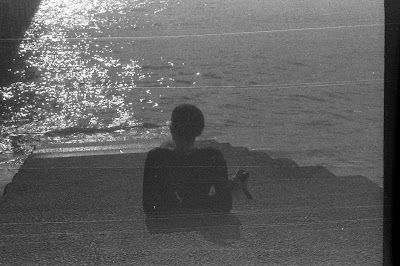I thought this time to avoid the scratching I will use a tissue to wipe off the water. Bad idea. Tissue is fluffy, so leaves stuff behind and you can end up with this - lot's of small white stuff.
On another note. I have tried a new film Acros 100, which is a different speed compared to the usual 400 I use. It has been all sunny and bright in London, so I though I will try a less sensitive film.
I have also being testing the Pentax MeSuper with a 55/1.7 lens which I got from a colleague of mine. So this was a completely new take.
Well, the Pentax meter's brilliantly! The f 1.7 allows for pictures inside to be taken without tripods, flashes or long exposures. The one above has been taken in the office. No natural light whatsoever.
I normally use The Digital Truth Massive Dev Chart and for some reason it doesn't have the development time for 35mm 100 ISO. Well, the 80 ISO was 11.5 min and my wise friend Natasha who was eager to learn how to develop said let's try 12 min. And so we did.
The negatives look well exposed, and are not under or over developed. So the gamble paid off. Also the Acros 100 is a great film!There is virtually no grain visible, such a difference to the HP5 +. Must try it on available light portraits.















